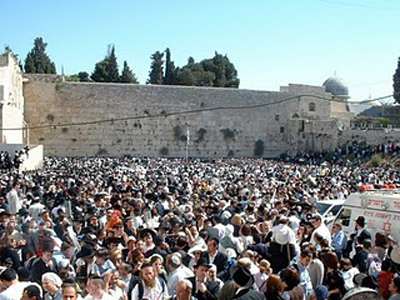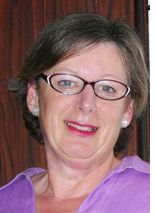
By Judy Lash Balint

JERUSALEM–It’s 5:00 a.m on Shavuot morning and I’m having trouble finding an empty seat at any shul in Jerusalem’s Old City. Every synagogue is already packed as I make the mistake of lingering a few minutes too long at the Kotel amongst the tens of thousands who have made their way there after a night of learning.
The atmosphere is light, almost light-headed you could say from lack of sleep, as young and old congratulate each other for making it through the night. Only the young yeshiva boys puffing away on cigarettes spoil the atmosphere. Small groups of secular Israelis wander through the crowd. “This is amazing,” mutters one woman.
After dropping in at three shuls, I finally find a spot in the hallway of the Ramban synagogue near the Cardo.
After Hallel and the reading of the Ten Commandments, a swift Haftarah reading brings us to the Yizkor memorial prayer. Only a few women are left inside as the young girls who filled the place and have not yet lost parents file out. It’s about the same proportion down at the Kotel—it seems that at least two thirds of the masses thronging the Kotel plaza are under 30.
Coming barely a week after Jerusalem Day, when similar numbers of mostly young people fill the area to celebrate the reunification of the city, the Shavuot early morning spectacle is another affirmation of the strength of the connection of the people to its roots.
In the blessedly cool air of the pre-dawn, it’s as if the Kotel is a giant magnet pulling in the multitudes from every direction. Flooding down Agron Street in front of the U.S Consulate building and its sleepy guards, the crowd gathers force and takes over the Mamilla area. The Tower of David and Jaffa Gate rise in front of us, outlined by spotlights.
It’s 4:40 a.m as we surge forward and down the steps of the David Street shuk only to encounter a human traffic jam as we make the turn from the Street of the Chain into the approach to the Kotel. A few groups of Arabs heading to work are walking up in the opposite direction. No one bothers them as they make their way out of the Old City through Jaffa Gate. On the way down, I follow Ashkenazic Chief Rabbi Yonah Metzger who is surrounded by a 4-person security entourage as he walks along holding hands with his grandson.
There are only four entryways into the Kotel plaza and they’re all completely overwhelmed by the numbers of people pressing to get in. There’s barely room to move as more and more people surge in from each of the four entry points. I head up to the stairway in front of the Aish building and take up a position at the railing just in front of the gold menorah overlooking the Kotel plaza adjacent to the last flight of steps leading down to the plaza. It’s the best place to take in the majestic transformation from night to dawn over the Temple Mount.
Within a few minutes, a thirty-something bearded man draped in a tallit approaches and asks me to move because he and his minyan are about to start davening. A young boy brings over their sefer Torah and unceremoniously places it next to me on the metal shelf that’s a diagram of the view in front of us. Since when is this a designated davening spot? There are other women coming and going, and the men have obviously seen that I was there before they decided to set up. I tell them that they didn’t disturb me and I wouldn’t disturb them, and I left in my own good time. Their insistence that the rest of us have to move just so they can daven wherever they want is another small example of the creeping takeover of so many of our national holy sites.
Unlike other years, when the bright sun peeks over the Mt of Olives, this morning’s sunrise is masked by clouds. The bright green lights adorning the two mosques behind the Temple Mount shine in the semi-darkness. As the sky begins to change color and turn slowly from a midnight blue to a steely grey, the garish lights vanish. Exactly at sunrise, chattering starlings swoop down, and the voices of the throng rise in prayer.
On this holiday of Shavuot that commemorates the giving of the Torah, the symbolic wedding between God and the Jewish people, most of the women are wearing white and the centuries-old Kabbalistic custom of Tikkun Leil Shavuot, a night dedicated to Torah study is observed by hundreds of thousands of Israelis. On the eve of the holiday, commentators on Israel Radio remark on the phenomenon of secular Jews eager to take part in some kind of Torah learning on Shavuot. Daily papers feature tightly packed full pages of venues where learning of all kinds is taking place all over the city. Many places are forced to turn people away for lack of space at their study sessions.
A few years ago, a May 18 2007 editorial in the American Jewish weekly newspaper, The Forward, noted, “…the proportion of Jews that turns out for the festival (Shavuot) will not be great…Shavuot simply hasn’t caught on with recent generations of Jews.” Perhaps things have changed this year, otherwise Shavuot could be another sign of the widening gap between Israel and the Diaspora.
*
Judy Lash Balint is a freelance writer based in Jerusalem. Her stories appear on her website, Jerusalem Diaries:In Tense Times